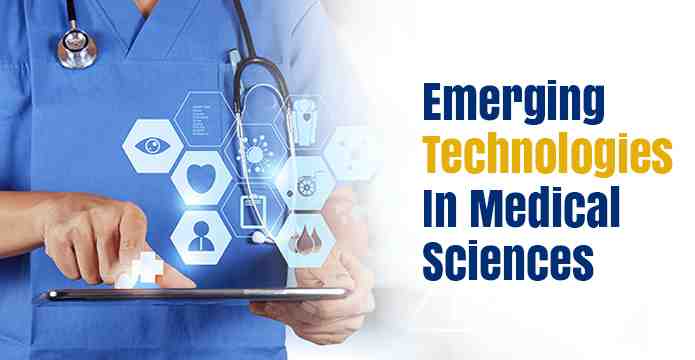Medical Science is an ever-emerging field of study with new researches coming up every day. Healthcare professionals need to keep themselves updated regarding the emerging trends in the medical sciences for better functioning and understanding of the trends and technologies. This is very vital for whoever is associated with the healthcare sector. Being familiar with the technologies also increases the efficiency of the work and brings in a different output in the field. The major five emerging technologies which are trending in 2019 are-
1. Artificial Intelligence (AI)
When we hear the term artificial intelligence we start imagining robots making our work easier and many of us fear also that it may make the humans obsolete in the future because everything will be done by the robots. AI-driven computers are programmed in such a way that they can make decisions with very little human intervention. Some people even wonder that maybe machines will soon replace the doctors! AI in healthcare mainly involves doctors and hospitals accessing vast data sets of life-saving information related to the patients. This includes treatment methods and its outcomes as well as numerous and interconnected health conditions. The way the AI’s computing potential can recognize and do the analysis of the small as well as large trends from the data of the patient and can even make predictions that are designed to identify the potential health outcomes. AI uses statistical tools and techniques to give computers the capability to learn as the incoming data comes in and to identify patterns and decisions with minimal human direction. For. e.g ‘Google DeepMind health’ builds AI and mobile tools that mine medical data to improve how hospitals and healthcare professionals deliver care to patients.
2. Robotics
It is the design, engineering, and use of robotic machines to perform partially or fully automated physical and cognitive functions. The market revenue for robots in healthcare is expected to be 2.8 billion by 2021. The da Vinci is a robot-assisted surgical system controlled by a surgeon which is a minimally- invasive surgical instrument and 3D high definition visuals to enhance accuracy and control. There are wearable robots which are devices used to rehabilitate or enhance a patient’s physical capabilities. Robot prostheses are also available which replaces a missing limb and functions in coordination with a residual limb. Robot exoskeletons assist people with existing limbs suffering from paralysis, movement disorder or muscle weaknesses. Robotics thus, enables the collection of data, provides for accurate and continuous data from health informatics professionals across many areas of healthcare, like surgery, drug delivery, physical and cognitive rehabilitation, and patient management.
3. Three – dimensional (3D) Bioprinting
Printing solid, 3D objects from a digital file with an additive process using different materials such as liquid metals, polymers, ceramics, epoxy resins or living cells is known as 3D bioprinting. Bioprinting the human tissue by using the stem cell bio-ink has the potential to minimize the shortage of organs for organ transplantation. For. e.g 3D bioprinted liver tissues are being used for drug testing and development. 3D printed drugs can be tailored to the specific needs of patients.
4. Nanomedicine
Nanomedicine utilizes nanotechnology or the study of molecular structure for developing precise devices to advance biomedical research and clinical practice. The Nanorobots which is injected into the patient’s bloodstream has the potential to be used for disease monitoring and drug delivery. Therapeutic nanoparticles have multiple applications in cancer patients, such as improving circulation, reducing toxicity, targeted drug delivery, enhancing pharmaceutical properties of drugs, developing synthetic vaccines, and more sensitive diagnosis and imaging.
5. Cloud Computing
Cloud computing enables the delivery and access to computing resources and services over the internet. The global market for cloud computing in healthcare is estimated to be 35 billion dollars in 2022. The cloud computing is used in healthcare for high volume storage of data at lower costs for healthcare organizations. It is also used for better patient care through remote patient monitoring and patient and doctor interactions. Real-time information sharing for doctors, administrators and other healthcare professionals, especially in times of disaster. For faster data sharing for improved medical research, helping data analysts gather data from multiple outside fields to better perform research.
All these modern technologies are changing the way the healthcare industry is functioning and will function in the future.
